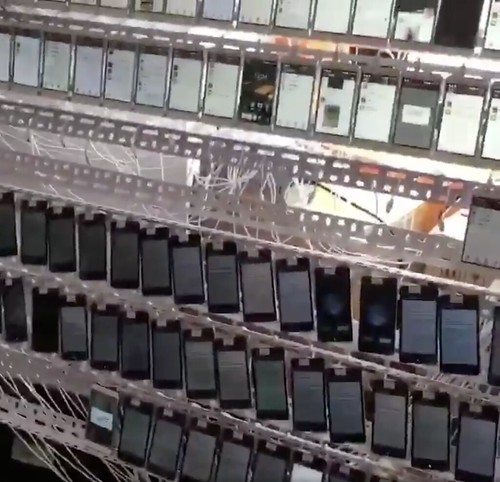It’s a wrap! The DockerCon Cool Hacks closing keynote.
Yesterday we continued a long tradition at DockerCon, the Cool Hacks closing keynote. In our Cool Hacks keynote, we like to emphasize applications that push the limits and applications that represent major future trends in container workloads. We also like to feature applications that demonstrate how Docker fueled innovation can be used every day.

This DockerCon, the three applications we chose embodied all of these characteristics.
Our first hack, by Christopher Heistand of the Johns Hopkins University Applied Physics Laboratory is helping save the world. The Double Asteroid Redirect Mission Test (DART) is testing kinetic impact against an asteroid to measure whether one can be redirected. They use Docker to emulate the specialized and expensive hardware, saving them money and development time.
David Aronchick (@aronchick ) and Michelle Casbon (@texasmichelle) demonstrated our second hack with Kubeflow. Machine learning in production workloads, at scale.
And finally, Idit Levine (@Idit_Levine) showed us Gloo. Gloo gives you the portability and choice of a serverless framework, from cloud services like AWS Lambda to running one of the several containerized self-hosted serverless frameworks. All running in Docker EE.
Check out our Cool Hacks closing keynote.
And finally, we wrapped up inviting Continue reading
 By elevating Vestberg to CEO, Verizon is signaling how important the network and the underlying technology is to the future of the operator’s business.
By elevating Vestberg to CEO, Verizon is signaling how important the network and the underlying technology is to the future of the operator’s business. The initial benefits will be focused on smart city programs, but the small cell deployment plans will boost the carriers' respective 5G services.
The initial benefits will be focused on smart city programs, but the small cell deployment plans will boost the carriers' respective 5G services. With ARM, NXP, Marvell, and Cavium, Telco Systems is focusing on the development of performance acceleration, containerization of VNFs, and cybersecurity.
With ARM, NXP, Marvell, and Cavium, Telco Systems is focusing on the development of performance acceleration, containerization of VNFs, and cybersecurity. In an SEC filing the company said it saved $178 million during the first two fiscal 2018 quarters “primarily related to employee termination costs.”
In an SEC filing the company said it saved $178 million during the first two fiscal 2018 quarters “primarily related to employee termination costs.” The FCC repeals net neutrality; Intel finds a way to monetize 5G; and AT&T closes on its Time Warner deal.
The FCC repeals net neutrality; Intel finds a way to monetize 5G; and AT&T closes on its Time Warner deal.
 Myths about the drawbacks and limits of hyperconvergence software have spread due to the fact that many of these “appliance solutions in software clothing” don’t have the flexibility of a true software solution.
Myths about the drawbacks and limits of hyperconvergence software have spread due to the fact that many of these “appliance solutions in software clothing” don’t have the flexibility of a true software solution.